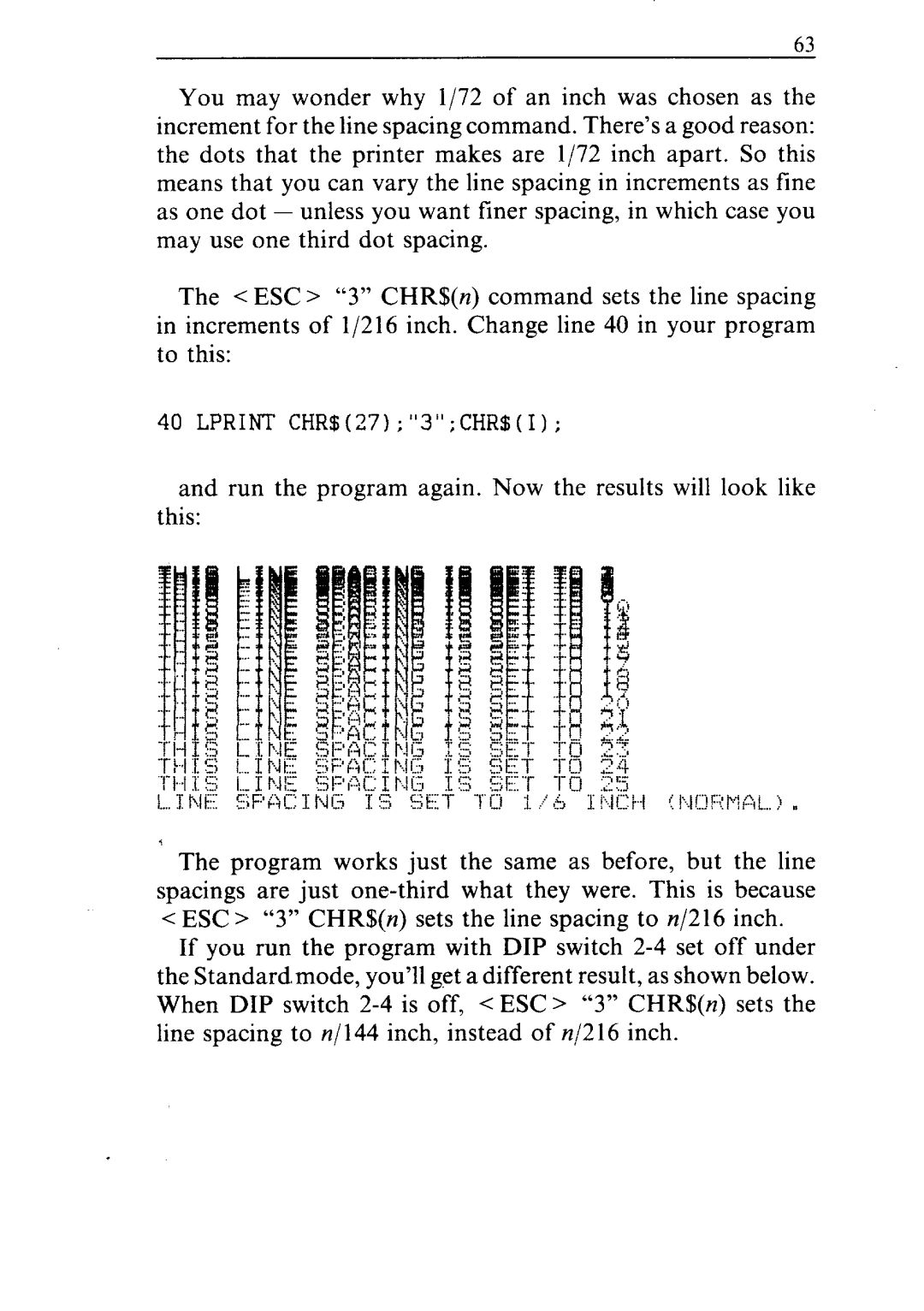
63
You may wonder why l/72 of an inch was chosen as the increment for the line spacing command. There’s a good reason: the dots that the printer makes are l/72 inch apart. So this means that you can vary the line spacing in increments as fine as one dot - unless you want finer spacing, in which case you may use one third dot spacing.
The < ESC > “3” CHR$( n) command sets the line spacing in increments of l/216 inch. Change line 40 in your program to this:
40 LPRINT CHR$(27);“3”;CHR$(I);
and run the program again. Now the results will look like this:
[...1b.t’::1 FiF’IQ1::1tqG 1 !Z g,lj;:“j- “I’Cl :j ;’& | c,p.f:::!4r”:A[..), I( |
<
The program works just the same as before, but the line spacings are just
If you run the program with DIP switch
